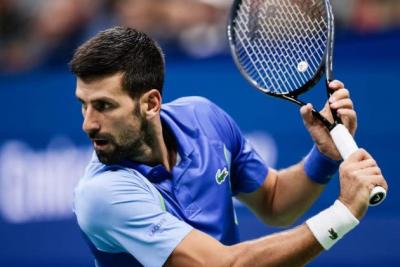Meditations on money in tennis

LONDON -- One of the abiding clichés in tennis holds that players regard cash as a secondary, even a tertiary consideration. How many times have you heard a TV commentator remark when two millionaires meet in a final, “Prize money is the last thing on their minds”? Yet on the evidence of their behaviour, players keep big bucks very much in mind at all times. And why should it be otherwise? They’re independent contractors with short careers competing in a zero-sum enterprise. To survive, much less flourish, they must deal with economic decisions with the same cold dispatch as they put away weak second serves.
In this respect they are no different from the corporations who sponsor the sport. Legally or otherwise, they dodge taxes, and draw up their tournament schedules and choose their commitments with an eye on the bottom line. Not unlike Google or Apple, they stash dough in offshore accounts and establish tax residency in countries that serve as no better than mail drops for money. If Monte Carlo could call on all the players who claim to live there, it would have the greatest Davis Cup team in history. Although it’s seldom mentioned in the game’s coverage, many tournaments in recent years have moved to locales that have little interest in tennis, but offer attractive tax inducements.
None of this should surprise anyone familiar with tennis history. Going all the way back to the amateur era, the game has always been awash in under-the-table money and off-the-books fiddles which make any true information about the circuit’s financial accounting fiendishly difficult to come by. In recent years players, especially those ranked outside the top hundred, have grumbled that they’re not receiving a fair share of the profits. But as in Hollywood, where accounting practices are almost impenetrable, tennis tournaments are notoriously non-transparent about the income they pocket and their operating expenses.
As for the players, they aren’t much more forthcoming. While pleading poverty and lamenting low official prize money, they rarely mention what they receive from national federations, from sponsors, from non-sanctioned tournaments, exhibition matches and guarantees – yes, even low-ranked guys get appearance fees in obscure venues – and freebies and discounts. In many countries, it’s not uncommon for Davis Cup competitors, many of them journeymen or non-factors on the ATP tour to demand tens of thousands of dollars for a weekend’s work.
As for the players’ complaint that they receive a piddling share of the pot at the Grand Slam events compared to what US baseball, basketball and football players get, they’re ignoring the salient fact that those sports are immensely popular and immensely profitable while tennis remains a niche game. What’s more, it’s a niche game which by most economic standards is struggling. And while the NFL, NBA and the Major Leagues are businesses based on the classic for-profit model, most tennis federations are not-for-profit organizations which benefit from special national and local subsidies and low taxes. Moreover, even the most well-financed tournaments depend on unpaid volunteers who’ll work for example at Wimbledon as ushers, linesmen, ball boys and girls, etc. for the pleasure of taking part in a glittering event.
In recent years Grand Slam events have given raises to early round losers. But the champions, semifinalists and quarterfinalists have done even better, receiving raises as much as 25 percent. If everybody is so worried about the little guys, why keep giving so much dough to the big guys? When corporate executives receive immense salaries and bonuses, it causes public outcries. But at Wimbledon there isn’t even a peep of protest when the champion gets almost 45 times as much as a first-round loser.
How much does a player need to earn to compete on the circuit? Well, that’s a bit like asking how long is a piece of string? It depends. If you’re a top-ranked star traveling with family members, a wife or girlfriend and maybe children, a coach, a physiotherapist, a psychotherapist and hitting partners and hangers-on, the annual bill could total over a million bucks. But it beggars the imagination to believe that a lower-ranked player can’t make a living if he keeps his operating expenses at a reasonable level, and crucially keeps his ranking in the top hundred, thus qualifying for Grand Slam events where even first-round losers make almost 100,000 US dollars.
It is worth noting, as the New York Times did in a circumspect manner, that the recent rise in prize money is not based entirely on a desire to achieve a more equitable distribution of income. Sure, there was sympathy for lower-ranked competitors, but there was also the hope that larger pay checks for the players at the bottom of the computer would cut down on what the Times vaguely referred to as “corruption.” To be specific, some players who figured to lose in the early rounds realized that they could make more money by betting on matches or cutting side deals with gamblers. Much as one might wish it were, otherwise, that’s the reality of pro tennis today. Money talks and everyone on the tour is listening, sometimes in amazement, sometimes in envy and fevered scheming.
© COPYRIGHT ITALIAN INSIDER
UNAUTHORISED REPRODUCTION FORBIDDEN


